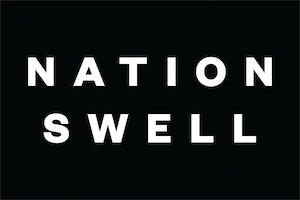With market forces and the regulatory environment converging to drive up demand for sustainability expertise in the private sector, the next few years will be pivotal for leaders hoping to develop and fine-tune their sustainability strategies.
On May 31st, NationSwell hosted a virtual Mainstage event called In the Green Seat: Lessons from Sustainability Executives on Designing for Impact that sought to unpack some of the wisdom, challenges, and unlocks shaping this dynamic moment.
Our featured panelists included Michael Kobori, Chief Sustainability Officer of Starbucks; Suzanne DiBianca, Executive Vice President & Chief Impact Officer of Salesforce; Erin Meezan, Chief Sustainability Officer of JLL; Letitia Ferrier Webster, Managing Director and Chief Sustainability Officer of Goldman Sachs Asset Management; and the event was moderated by Jason Rissman, Chief Experience Officer of NationSwell.
Here are some of the key learnings from the event:
– Embrace the unprecedented attention on sustainability to embed the work throughout the business. Sustainability practices are actively shifting from voluntary to mandatory, bringing it top of mind for business leaders. To succeed in mitigating risk, meeting disclosure requirements, and adding value to the business and its stakeholders, sustainability should be integrated into core business strategy. Ultimately, there is no sustainability without a sustainable business model.
– Interrogate goals and ambitions to include cross-functional priorities, especially if inheriting an existing sustainability strategy. It is difficult to add sustainability to business goals after the fact, much like it’s difficult to add an impact lens to sustainability work once programs are already in motion. Don’t shy away from thought-provoking questions; asking a question as fundamental as “what would our ideal impact be?” can help you identify if your organization is focusing on the best questions and goals for its unique strengths.
– Prioritize credible and actionable data. Collecting credible, auditable data helps with meeting reporting requirements and enables better strategic decisions, ESG performance projections, and roadmap development. At JLL, Chief Sustainability Officer Erin Meezan started an ESG Center of Excellence to bring together the business functions that generate and own ESG data, including finance, legal, and her own sustainability team. The Center’s activities have included internal and external audits to assess data quality and data mapping. The Center aims to understand how many people are involved in data generation and identify opportunities for better efficiencies and digitization.
– Weave sustainability and finance together to unlock new allies and innovation. By aligning financial resources with sustainability principles, companies can unlock new avenues for investment and innovation. All panelists agreed on the importance of bringing financial experts into the fold, as their skillsets are highly transferable to sustainability needs. Beyond personnel, adding a sustainability lens to traditional finance mechanisms can help unlock innovation and generate continued demand for sustainability from investors, as noted by Goldman Sachs CSO Letitia Webster. Large companies are already innovating based on these ideas; for example, Salesforce used a green bond to finance its acquisition of Slack, which allowed it to subsequently invest in additional products like Net Zero cloud.
– Understand your company’s unique role to play across various spheres of influence. It is impossible for any company to be involved in every aspect of sustainability work, so staying focused and playing to your company’s strengths is crucial. There are areas to make significant progress against your climate goals, such as focusing on building infrastructure or circularity in product materials. For example, at Starbucks, new employees all receive a reusable coffee cup that they can also use for their on-shift drinks. It’s an internal-foused change but one with significant impact: Starbucks CSO Michael Kobori estimates that 300 million cups will be saved through this initiative. Meanwhile, at Salesforce, EVP and Chief Impact Officer Suzanne DiBianca categorizes Salesforce’s opportunities under four main spheres of influence: employees, peer networks, policy, and customers. Salesforce’s activities in each of these areas are defined by the company’s inherent strengths – for example, the size of the employee base, or the use of technology to enhance customers’ understanding of their own sustainability impact.
– Maintain aspiration and passion as drivers of innovation and impact. Historically, sustainability work has been driven by passionate employees and ambitious targets. New regulations and stakeholder interest bring new scrutiny to the work, and ambitious goals will need to be backed up by data and evaluated in the context of the potential scrutiny they will attract. Scrutiny might make ambitious goals more daunting, but at the end of the day, stakeholders expect the work to proceed and increase in impact. Sustainability leaders have an opportunity to shift certain aspects of the work to more natural homes within the organization with the right stakeholder engagement, incentive alignment, and collaboration across functions, leaving the sustainability team with additional capacity for creativity and innovation.
– Ally with peers to strengthen impact. By fostering strategic alliances with industry peers, non-governmental organizations, and local communities, companies can strengthen accountability, share best practices, and amplify impact. At Goldman Sachs, CSO Letitia Webster is convening fellow leaders to share challenges and opportunities to mobilize partnerships. When partnerships come to fruition, they can shift entire industries – for example, CSO Suzanne DiBianca shared the significance of Salesforce’s participation in advanced market commitments alongside peers like Meta and Google.
View the full conversation:

 "
"